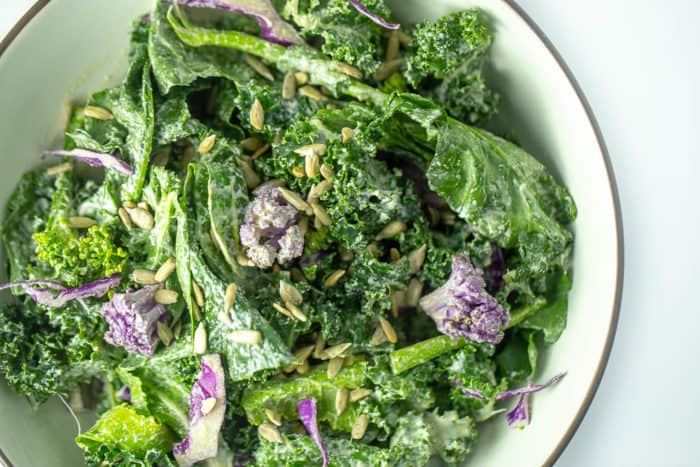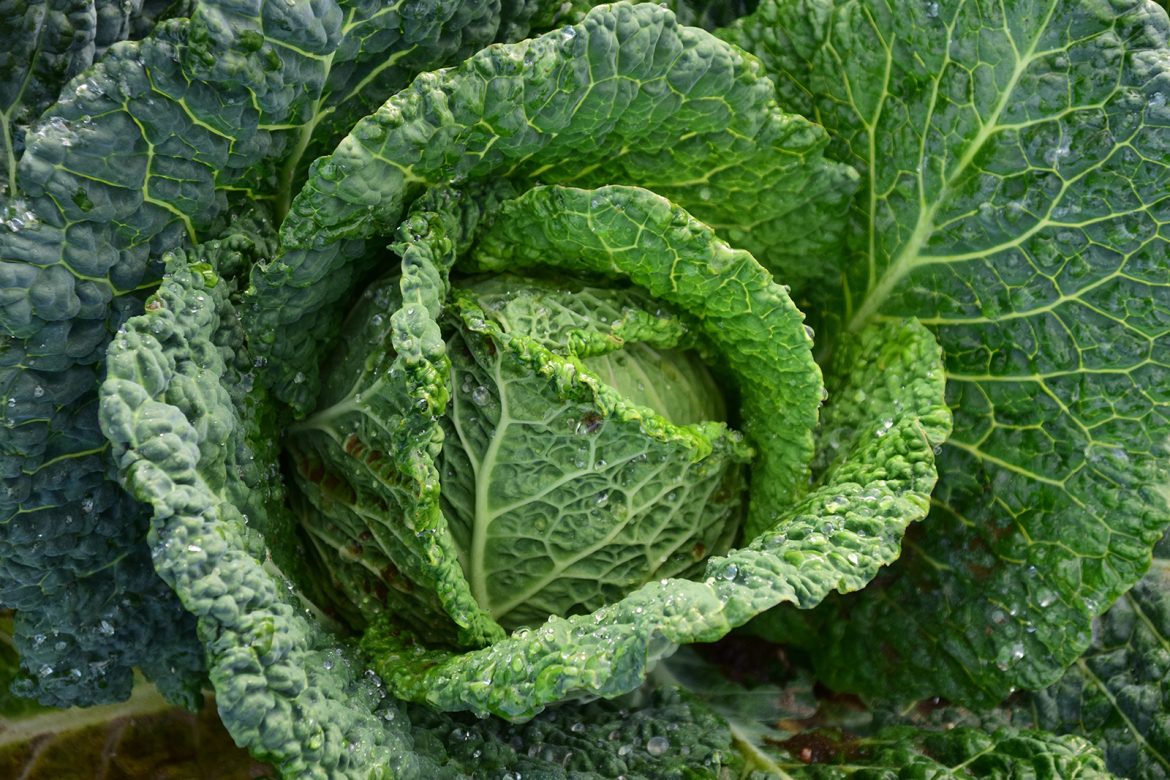The “Don’t Trust a Fart Salad” Origin Story
Maggie, why am I so gassy after eating most of your salads?
– An email I expect to receive any day now.
You may have noticed most of my recipes feature raw, cruciferous vegetables pretty prominently. I’m talking broccoli, cabbage, kale, cauliflower, bok choy, broccolini, arugula, Brussels sprouts, radish, kholrabi, rapini, and other delicious vegetables from the Brassica family known to make you fart.
This is not only because I like to test the strength of Brad’s marriage vows at every opportunity.
Cabbage, along with other cruciferous vegetables, contain a variety of phytochemicals, vitamins and minerals as well as fiber. The American Institute for Cancer Research has the cruciferous vegetable family on their list of “Foods that Fight Cancer“!
Why Cruciferous Vegetables for Cancer?
Cruciferous vegetables contain a variety of phytochemicals that may have anti-cancer properties. Some of the most well-studied phytochemicals found in these vegetables include:
- Glucosinolates: These are sulfur-containing compounds that are broken down into biologically active compounds, such as indoles and isothiocyanates, that have been shown to have anti-cancer properties, such as inducing cell death in cancer cells and inhibiting the growth of tumors.
- Sulforaphane: This is a type of isothiocyanate that is found in especially high concentrations in broccoli sprouts. Studies have shown that sulforaphane may have anti-cancer properties, such as inhibiting the growth of cancer cells and preventing DNA damage.
- Dithiolthiones: These are sulfur-containing compounds that have been shown to have anti-cancer properties, such as inducing cell death in cancer cells and inhibiting the growth of tumors.
- Flavonoids: These are a group of antioxidants that are found in cruciferous vegetables. They have been shown to have anti-inflammatory properties and may help protect against cancer by scavenging free radicals and preventing DNA damage.
An article from the National Cancer Institute discusses that the biologically active compounds have been extensively tested in animals and that research indicates that indoles and isothiocyanates can inhibit the development of cancer in the bladder, breast, colon, liver, lung, and stomach by:
- Protect cells from DNA damage
- Help inactivate carcinogens
- Have anti-inflammatory effects
- Induce cell death
- Inhibit tumor blood vessel formation and tumor cell migration
How to Prepare Cruciferous Vegetables to Maximize the Anti-Cancer Benefit?
The phytochemicals above are a mess of words I can barely say with my current aphasia. It keep is simple, sulforaphane is the real anti-cancer heavy hitter and cruciferous vegetables are packed with sulforaphane.
To make it not simple, that last statement was a lie. Cruciferous vegetables don’t contain large amounts of sulforaphane. In actuality, they contain large amounts of the precursors, glucoraphanin and myrosinase, that create active sulforaphane when the plant is damaged by actions like chewing, cutting or crushing.
The tricky thing is, myrosinase is destroyed by heat and the amount available drops off precipitously when the plant is heated to over 120°F/ 50°C. If you cook these vegetables before eating them, much of the myrosinase will be destroyed and you won’t be able to extract much sulforaphane. There are a few ways around this:
Eat them raw.
My diet during healing was essentially raw cruciferous vegetables covered in fat. It was delicious but you can imagine the GI consequences of that much raw cabbage, broccoli, kale and cauliflower. Chewing took forever. Despite these downsides, this is still the most surefire way to maximize your sulforaphane. For example, studies show that raw broccoli has ten times as much sulforaphane as cooked.
Grind them in advance.
During all that chewing, your teeth damage the plant by grinding and thus combining the precursors to make sulforaphane. You can do this without your teeth using a food processor. Let the ground up cruciferous vegetables sit for at least 30-40 minutes before cooking, to allow the sulforaphane to form. You can then use them in cooked applications from broccoli soup, to cauliflower rice, to mashed cauli.
Add some back.
You can add myrosinase to your cooked cruciferous in the form of a raw cruciferous like mustard. Roasted kohlrabi dredged in mustard is a favorite of mine.

Some Tasty, Keto, Anti-Cancer, Cruciferous Vegetable Recipe Ideas
I have a few on this website like:
- Kale Broccoli Salad with Lemon Tahini Dressing – I had this at least once a week during my cancer healing.
- Sesame Tempeh and Cabbage Salad – Another salad that made a weekly appearance
- Kale Caesar Salad – Vegan, Keto and full of healing goodness. Add some anchovies or sardines with animal-based nutrition
- Almost Raw Vegetable Thai Curry – Sure it’s totally not traditional but I load this up with broccoli, cauliflower and cabbage.
- Raw Creamy Broccoli Salad – Totally non-dairy
Not on my blog but google to find recipes for broccoli soup, cauliflower rice, or mashed cauli where you can pre-processed the cruciferous veg 40 minutes before cooking.
Or roast some simple diced kohlrabi or Brussel sprouts in coconut oil and serve with mustard. One of Brad’s and my faves.
This probably wasn’t the best choice of an article to write while I was fasting. Or maybe that’s the reason I wrote it.


